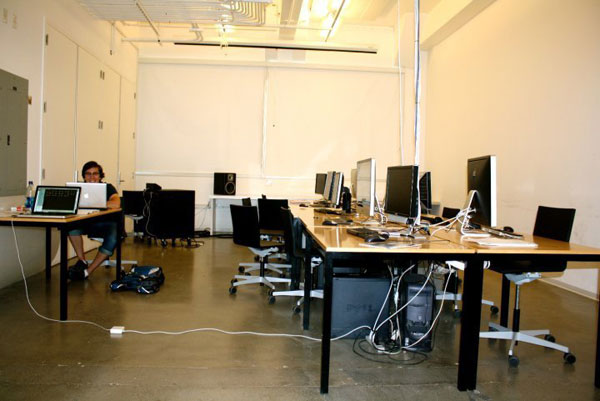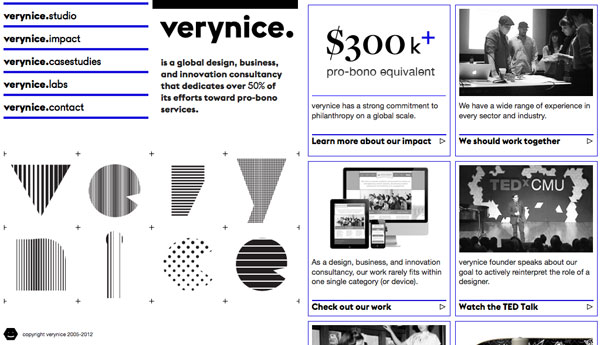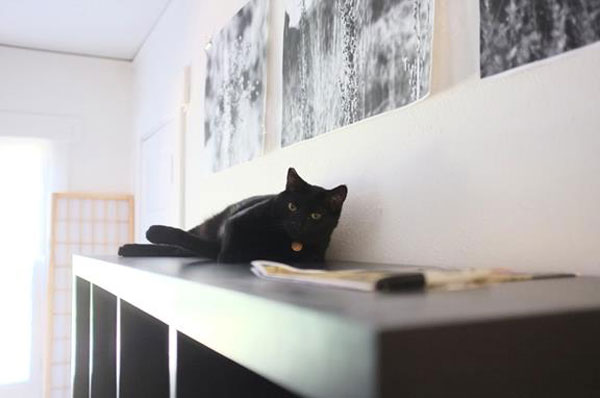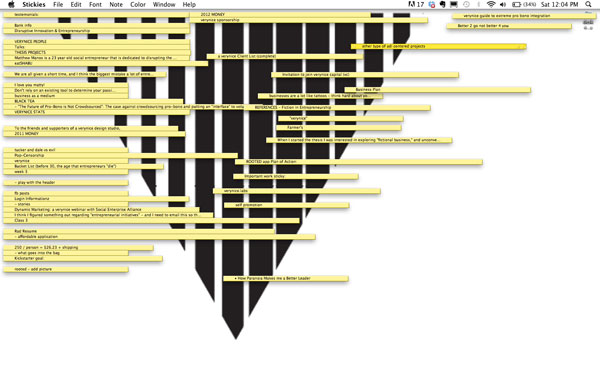One Minute With…
Matthew Manos

Hi Matt, thanks for taking time to chat with One Minute With. Tell us a little bit about yourself and your work.
Hi! I am a recovering graphic designer that has evolved into a full-time design entrepreneur. I currently lead strategy and business development for verynice (my company), in Los Angeles, and I get a kick out of coming up with ideas for things that I don’t have time to do. I see business as a medium that is no different than Photoshop, Illustrator, or a tube of paint – just another form of creative expression.
Walk us through a typical day in the life of Matthew Manos.
My days are generally packed with talking to people. Because my role within verynice has shifted from Creative Director to this more “executive” kind of role, I spend a lot of times in meetings. It sounds lame, but I actually love it – I see it as a performance art. Often times I’ll assume different personas when talking to people. It makes my life more interesting, more theatrical. I see personas as a medium of design, too. That is about 40% of my day.
Aside from meeting with people, I spend a lot of time designing, but never within one category. Sometimes I’ll find myself making a logo, sometimes an app, sometimes a business plan, sometimes a product, sometimes an experience. I really like being all over the place. If I’m doing one type of thing for too long I go a little crazy. This is probably another 40% of my day.
The final 20% of the day is flexible. I’m currently working on launching a new company, am dreaming about writing a comic book, am dreaming about writing a booky book, and am working on launching a whole new series of initiatives within verynice, all related to the relationship between design, education, and entrepreneurship.

How did you get into design? Was there a defining point in your career, and if so, how did it shape you as a designer?
My design career actually started through my interest in painting. At a young age, I was always obsessed with landscapes and abstraction. This interest eventually evolved to become my first company – a painting business that produced artwork for people’s homes based on their personality and the space it was intended to hang. Over the course of two summers, I sold close to 150 paintings. This experience showed me what it was like to work with people to produce art. I then learned that design was very much about that, too, and signed up for a design class during my senior year of high school. Armed with a pirated copy of Photoshop, I reached out to a local non-profit organization, Wheelchair Skater, to design some stickers for them – they became my first pro-bono client. This really was a game-changer for me because not only did this little venture of mine introduce me to design, it introduced me to entrepreneurship. Turning point 1/3.
I then studied Design Media Arts at UCLA where I became more and more fascinated with the tangibility of design, and the power of communication, in general. Eager to try the things I was learning outside of the classroom context, I volunteered for over 30 student organizations, and really built upon my freelance career as a web designer, graphic designer, animator, and video editor. Excited by the idea of taking this freelance career to the next level, in 2008, I started to draft ideas for what my ideal design firm would be. Over the course of the next year, I launched verynice, but simultaneously took on a ton of internships so that I could get a first-person perspective on how some of LA’s greatest designers were running their companies. These internship experiences shaped me as a “business man,” but also confirmed my hypothesis that there was a need to innovate in the social sector. Turning point 2/3.
After UCLA I hopped straight into grad school at Art Center College of Design, where I studied Media Design for two years. This entire experience was eye opening to me, and confirmed a lot of the struggles I had been having with the design industry, and that is this: To say that websites, posters, logos, etc. are what encompass the role of designers, is to miss out on millions of other places the mind of a creative can go. It was at Art Center that I really came to terms with who I am as a designer, and how I see design’s role evolving. Turning point 3/3.
How do you approach a new project? What’s your creative process like?
Restriction defines my creative process. Many of my personal art and design projects from the past 3 years or so have started by setting a series of rules for myself. The first time I did this was for my senior project at UCLA, titled “Mandolin & Unicycle,” a project in which I gave myself 10 weeks to learn two things I have always wanted to learn, simultaneously. The rules I set were these:
– In 3 weeks, learn a song on the mandolin.
– In 3 weeks, learn how to ride the unicycle straight, for one block.
– In the remaining 4 weeks, learn how to play the song while simultaneously riding the unicycle.

When you were just 20 years old, you set up your design company verynice – How does running a creative agency compare to working freelance? What new challenges does it bring?
My freelance career began at age 16, and this later evolved and sort of merged under the name “verynice” when I turned 20. The decision was really intentional – I started saying “we” instead of “me” before there truly was a “we” as a way to gain quicker respect and trust from clients. It’s a sad reality, but when you are a young person in this world, people’s expectations of what you are capable of are quite narrow. They don’t judge you on what you have done, and what you have accomplished. They judge you on where they think you should be, given your age. So the shift from “Matthew Manos” to “verynice” was a response, of sorts, to that struggle.
The good news is that the studio has since grown to be a home for over 100 collaborators across the globe, so now when I say “we,” I mean it.
verynice is notable for the fact that you have given $350,000 worth of pro bono work to non-profits – Tell us a bit about this idea, why you decided to do it, and how that has actually manifested itself over the past 3 years.
What makes verynice unique is that over 50% of our efforts are given away for free, to non-profit organizations. This was a conscience decision from the very beginning – the hope to really disrupt the way the design industry operates, from an economical standpoint. Non-profit organizations in the United States allocate a total of 7.6 billion dollars for design and marketing expenditures, annually. Yes – annually. Above all aspirations, I really hope verynice can be seen as an inspiration to other design firms, proof that pro-bono can be a part of every day business. Imagine what could be accomplished if organizations had a spare 7.6 billion, every year. There is some amazing possibility and potential for impact, and it is in our hands – we can make that happen.

The verynice office mascot.
If, in some Freaky Friday-like situation, you could live the life of another designer, illustrator or creative, for a day, who would it be, and why?
I am so glad you asked. I would absolutely love to switch bodies with Swiss Miss. I love the idea of being able to manage a bunch of small things that are all my own – not attached to any client or agency. That was the direction I had always wanted to go in, and it is starting to happen, but it just takes time and patience.
What design tools could you not live without?
People think I am crazy, but I could not live without the sticky notes application that comes free on Macs. I have hundreds of these. It seems chaotic, but it all juts makes sense – this is where my business plans are, my ideas, brainstorms for new creative projects, my finances, everything. Extremely dangerous, 100% not safe, but hey – it works!
I also could not live without my Moleskine notebook. Every project I take on is first sketched out with pen and paper in my notebook. I just love how messy they get, and how worn they become over time.

And finally, what tips would you give to anybody who is looking to get started in design?
In design school you will often be told what design is, the types of mediums it is comprised of, and the value it can have on society, or in business. I encourage anybody who is just starting in design to be open enough to define all of those things for yourself.
Marketing and design is shifting significantly, and the role of designers, right now, is drastically different than it was during those Mad Men days. We are entering a future in which every thing around us, from the sidewalks we walk on, to the cities we live in, to the hats on our head, can be mediums for communication and engagement. Because of this reality, discovering problems and solutions will become a very difficult task. The role of a designer will soon not be to produce materials, but instead to define and discover the root of a problem that cannot be seen with a naked eye. Be open to that possibility – it is an exciting one.
1 Comment
Matthew Manos
Thanks so much for having me, Conor! This was a really fun interview – if anyone reading has follow up questions, or comments feel free to post it here and I’ll respond :)